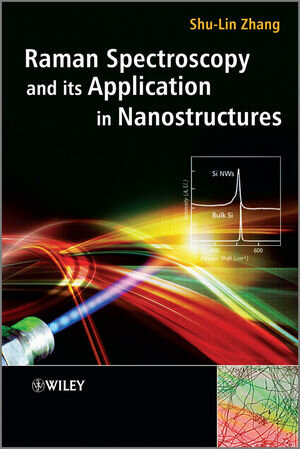
×
![Buchcover ISBN 9781119961666]()
„Overall the book is clearly written, well-structured, and wellillustrated with figures. . . Therefore I believe this textbookwill be extremely valuable for advanced students and PhD studentsfrom different scientific disciplines and for instructors teachingthe very important subject of Raman spectroscopy. Furthermoreit will be a valuable resource for scientists in this field.“ (Analytical and Bioanalytical Chemistry, 8 September2012)
Raman Spectroscopy and its Application in Nanostructures
von Shu-Lin ZhangRaman Spectroscopy and its Application in Nanostructures isan original and timely contribution to a very active area ofphysics and materials science research. This book presents thetheoretical and experimental phenomena of Raman spectroscopy, withspecialized discussions on the physical fundamentals, newdevelopments and main features in low-dimensional systems of Ramanspectroscopy.
In recent years physicists, materials scientists and chemistshave devoted increasing attention to low-dimensional systems and asRaman spectroscopy can be used to study and analyse such materialsas carbon nanotubes, quantum wells, silicon nanowires, etc., it isfast becoming one of the most powerful and sensitive experimentaltechniques to characterize the qualities of suchnanostructures.
Recent scientific and technological developments have resultedin the applications of Raman spectroscopy to expand. Thesedevelopments are vital in providing information for a very broadfield of applications: for example in microelectronics, biology, forensics and archaeology. Thus, this book not only introducesthese important new branches of Raman spectroscopy from both atheoretical and practical view point, but the resulting effects arefully explored and relevant representative models of Raman spectraare described in-depth with the inclusion of theoreticalcalculations, when appropriate.
In recent years physicists, materials scientists and chemistshave devoted increasing attention to low-dimensional systems and asRaman spectroscopy can be used to study and analyse such materialsas carbon nanotubes, quantum wells, silicon nanowires, etc., it isfast becoming one of the most powerful and sensitive experimentaltechniques to characterize the qualities of suchnanostructures.
Recent scientific and technological developments have resultedin the applications of Raman spectroscopy to expand. Thesedevelopments are vital in providing information for a very broadfield of applications: for example in microelectronics, biology, forensics and archaeology. Thus, this book not only introducesthese important new branches of Raman spectroscopy from both atheoretical and practical view point, but the resulting effects arefully explored and relevant representative models of Raman spectraare described in-depth with the inclusion of theoreticalcalculations, when appropriate.



